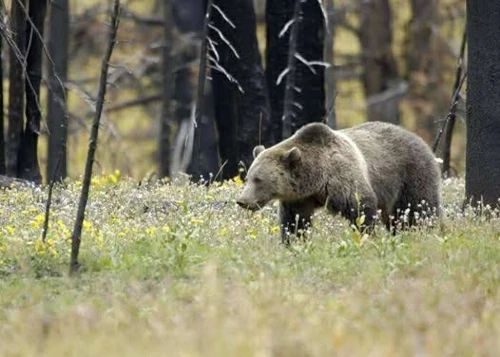By Former Bonners Ferry Mayor Darrell Kerby
 The Interagency Grizzly Bear Committee may soon become obsolete. For 55 years, this group of bureaucrats has been utilized by federal agencies to implement management restrictions on human activities within designated grizzly bear habitat.
The Interagency Grizzly Bear Committee may soon become obsolete. For 55 years, this group of bureaucrats has been utilized by federal agencies to implement management restrictions on human activities within designated grizzly bear habitat.
Chris Servheen, former Grizzly Bear Recovery Coordinator for the U.S. Fish and Wildlife Service, served for 35 of those years and is now speaking out against budget cuts under the Trump administration, which he claims threaten the committee’s continued existence.
According to newspaper accounts, Servheen is concerned that these cuts will lead to the loss of 55 years of accumulated research.
 However, this alarmist assertion warrants scrutiny. Over the decades, the committee’s research has not been groundbreaking. Instead, it has largely reinforced long-established knowledge about grizzly bears while using these findings to justify restrictions on human activities within federal—and, by extension, private—lands.
However, this alarmist assertion warrants scrutiny. Over the decades, the committee’s research has not been groundbreaking. Instead, it has largely reinforced long-established knowledge about grizzly bears while using these findings to justify restrictions on human activities within federal—and, by extension, private—lands.
The committee determined that grizzly habitat encompasses hundreds of square miles per adult bear, leading to regulations limiting human activity within these areas to a small percentage at any given time.
The justification for these restrictions hinges on the conclusion—reached after decades of study—that the primary threat to grizzly populations is human-caused mortality. In response, the committee mandated road closures within grizzly habitat to minimize human presence.
When I asked Servheen about their research regarding grizzly reactions to a passing vehicle, he described three possible responses: 1) the bear remains unaffected, 2) the bear moves away from the road, or 3) the bear moves toward the road. In other words, human activity does not inherently disturb grizzlies. The true intent behind restricting human presence was to prevent direct encounters, operating under the assumption that increased interactions would lead to higher rates of grizzly shootings.
This assumption served as the basis for closing vast tracts of land, without fully considering the unintended consequences. The imposition of stringent restrictions may, in fact, have contributed to hostility toward grizzlies, exacerbating human-driven depredations. Instead of employing harsh regulatory measures, the committee might have achieved better conservation results through outreach and education—helping local communities recognize that reducing human-driven grizzly mortality could allow habitat access to remain open while simultaneously benefiting bear populations.
When grizzlies are perceived as adversaries rather than integral components of the ecosystem, they remain at risk.
Ultimately, the committee’s 55 years of research are well documented, and its dissolution does not imply the loss of scientific data. Rather, it signals that further grizzly-specific studies may be unnecessary, as the scientific understanding of their behavior has reached maturity. Moving forward, human social scientists—not wildlife biologists—may play a more effective role in grizzly conservation by fostering coexistence between human populations and the species.
